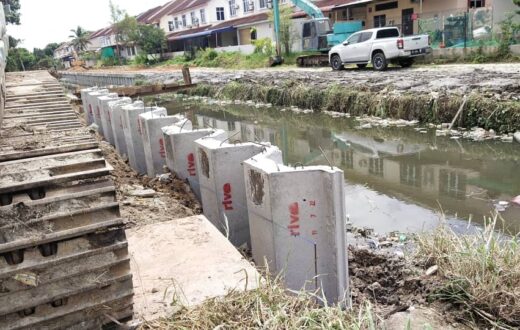Introduction
Sheet piles, the stalwart sections of interlocking materials driven into the ground, stand as steadfast guardians, offering earth retention and excavation support. Predominantly crafted from steel yet also embracing timber or reinforced concrete, these robust elements find their diverse utility in various domains. From retaining walls to marine fortifications, their versatility resonates, tailored to the contours of each project.
Timber Sheet Piles: A Glimpse at Versatility

Timber sheet piles, with their aptitude for short spans in temporary structures, emerge as nimble companions. Utilized to combat light lateral loads, these structures are often interconnected through tongue and groove joints. However, their Achilles’ heel surfaces when faced with soils composed of stones, requiring preservative treatment and careful considerations.
| Advantages | Disadvantages |
|---|---|
| Cost-effective in wet and compressive soils | Require preservative treatment |
| Lightweight, aiding in easy lifting and handling | Less suitable for soils containing stones |
| Recyclable and environmentally friendly | May have limitations in load-bearing capacity compared to steel |
| Versatile application in various structures | May deteriorate over time if not treated properly |
Reinforced Concrete Sheet Piles: Fortifying the Permanent

Crafted from precast concrete members, reinforced concrete sheet piles exude permanence. Embracing the realm of river embankments and marine structures, these stalwarts, connected via tongue and groove joints, boast obliquely faced toes facilitating seamless driving and interlocking, complemented by meticulously cast capping beams.
| Advantages | Disadvantages |
|---|---|
| High strength and stiffness | May require specialized handling during transportation and driving |
| Simple construction and convenient materials | May have higher initial costs compared to other materials |
| Design flexibility in shape and form | May be more prone to corrosion over time |
| Long service life in various environmental conditions | Special attention required to withstand handling stresses |
Steel Sheet Piles: The Epitome of Resilience

Steel reigns supreme as the quintessential material for sheet piles. Its prowess against high driving stresses, impeccable water-tightness, and expandable length through welding or bolting renders it unparalleled. The gamut of steel sheet piles encompasses various forms catering to distinct needs:
1. Normal Sections: Larssen and Frodingham
Larssen and Frodingham sheet piles, offering interlocking systems, assure optimal strength-to-weight ratios. Their design not only eases positioning and driving but also ensures a snug joint, sealing water out effectively. The uniform section shape of Larssen piles and the paired arrangement of Frodingham piles cater to diverse installation needs.
2. Straight Web Sections: Forming Cellular Cofferdams
Driven and interlocked, these sections create cellular cofferdams, often filled with gravel or small rocks, catering to specific requirements.
3. Box Sections: Anticipating Heavy Loads
Created by welding two or more sheet pile sections, these sections find their niche in scenarios necessitating heavy loads and high bending moments.
4. Composite Sections: A Fusion for Strength
Commonly found in waterfront protection projects, composite piles marry the strength of double Frodingham sections welded to the flange of a universal I-beam, gearing up for substantial axial loads and bending moments.
| Advantages | Disadvantages |
|---|---|
| Extreme resistance to driving stresses | May be heavier compared to other materials |
| Lightweight | May have higher initial costs than other options |
| Reusable for multiple functions | May have limitations in certain environmental conditions or soils |
Installation: Precision Meets Technique
The installation of sheet piles demands meticulous precision intertwined with a repertoire of well-honed techniques to ensure structural integrity and functionality:
- Meticulous Inspection: Before installation, a thorough examination of sheet piles for straightness, interlocking integrity, and any defects is imperative.
- Vigilant Driving Monitoring: The driving process requires vigilant monitoring. If a pile halts penetration prematurely, immediate actions, such as partial excavation or using a water jet to remove obstacles, are vital
- Deviations and Guide Controls: Due to encountering soil obstacles, sheet piles might deviate from the vertical plane during driving. Guide controls counteract these deviations
- Panel Driving and Support Techniques: Techniques like panel driving or employing trestles and walings assist in positioning and supporting sheet piles during installation
- Installation Equipment and Methods: Vibratory hammers, impact hammers, or hydraulic methods are deployed based on soil conditions to ensure successful installations
- Precision and Longevity: Achieving precision in installation not only ensures immediate stability but also secures the long-term performance and durability of the structure
Installation precision aligns with the project’s integrity, safeguarding against deviations and challenges inherent in diverse soil conditions and site-specific nuances
Sources:



